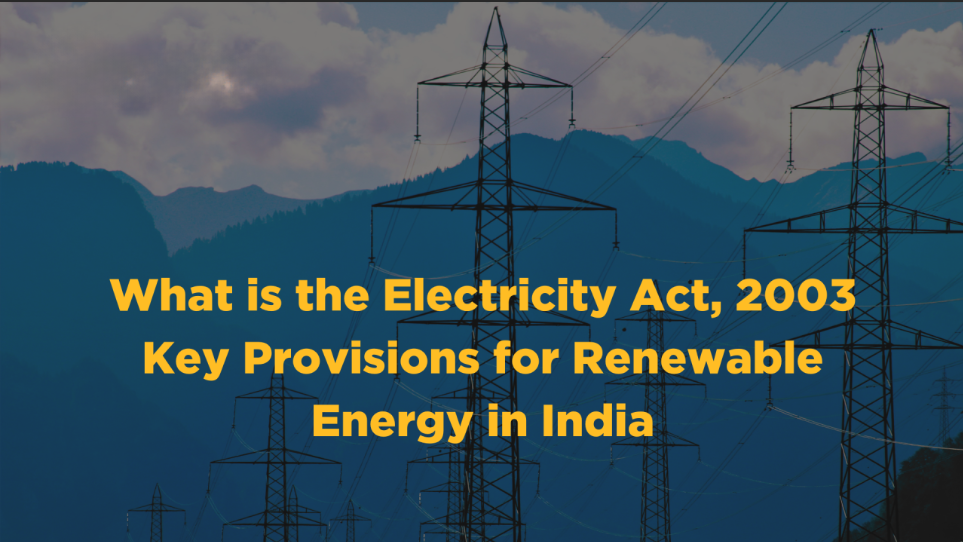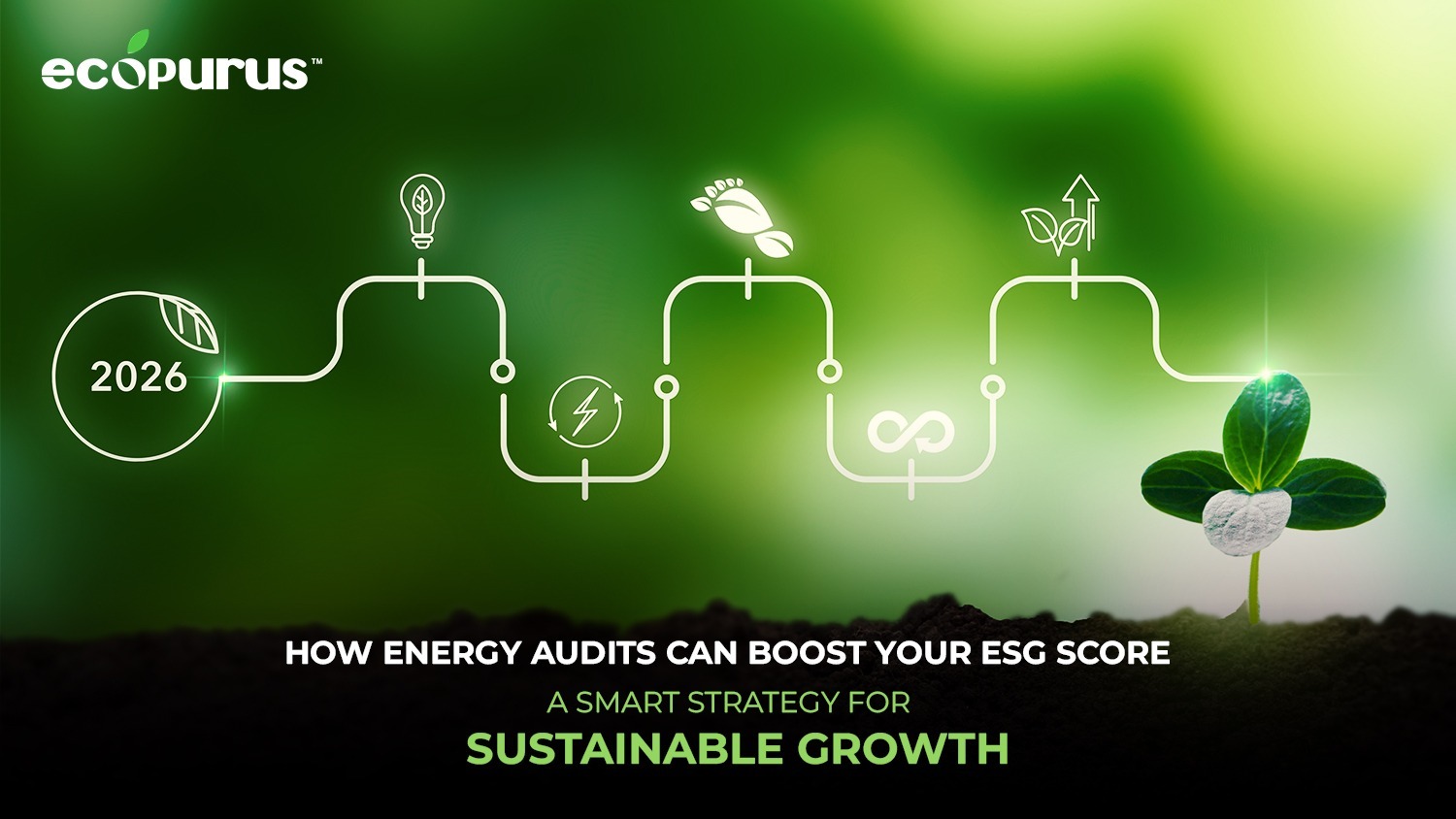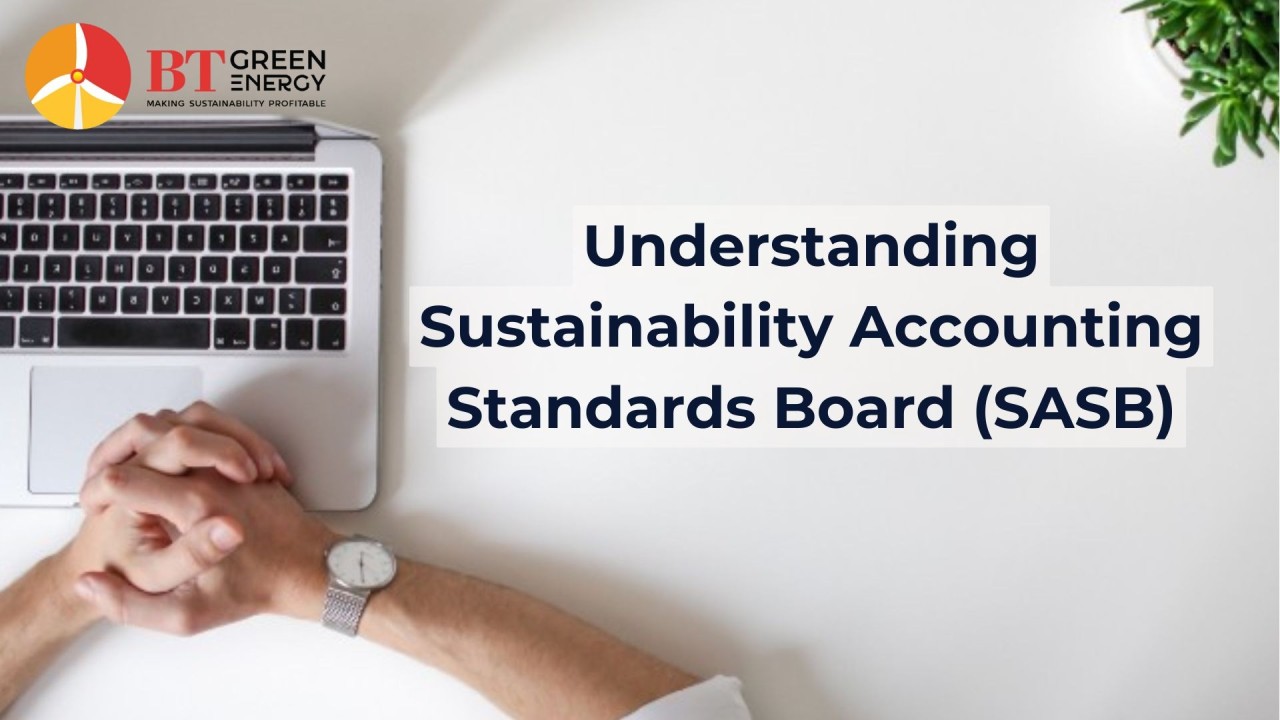
What is the Electricity Act, 2003: Key Provisions for Renewable Energy in India
The Electricity Act, 2003 is a pivotal piece of legislation consolidating laws related to the generation, transmission, distribution, trading, and use of electricity in India. Enacted to promote a competitive, transparent, and efficient electricity market, this Act has undergone several amendments to align with India’s evolving energy landscape, particularly the transition towards renewable energy.
This post delves into the key sections and provisions of the Electricity Act, 2003, specifically focusing on those that impact renewable energy adoption and development.
Objectives and Scope of the Electricity Act, 2003
The primary objectives of the Electricity Act, 2003, include:
Promotion of Competition: Encouraging the development of a competitive electricity market.
Protection of Consumer Interests: Ensuring the availability of electricity to all areas, including rural regions.
Efficient and Environmentally Benign Policies: Promoting policies that enhance energy efficiency and the environment.
The Act provides a comprehensive framework that governs the entire electricity value chain, including generation, transmission, distribution, and trading. It also empowers central and state authorities to regulate and oversee the sector.
Key Provisions Related to Renewable Energy
The Electricity Act, 2003, includes several provisions that specifically promote renewable energy. These provisions lay the groundwork for integrating renewable energy into India’s power grid and encourage the development and utilization of renewable sources.
Section 86(1)(e) – Renewable Purchase Obligations (RPOs)
One of the most critical sections related to renewable energy is Section 86(1)(e). This section mandates State Electricity Regulatory Commissions (SERCs) to specify a percentage of the total consumption of electricity in the area of a distribution licensee to be sourced from renewable energy sources.
What are RPOs?: RPOs require obligated entities, such as open access consumers, captive power producers, and distribution companies, to purchase a certain percentage of their electricity from renewable sources. This policy is crucial for driving demand for renewable energy across India.
Implementation and Compliance: SERCs are responsible for setting the specific RPO targets for their states, taking into consideration the local availability of renewable resources and the need for sustainable energy development. Companies can meet their RPOs through self-generation of renewable energy, purchasing renewable energy from third parties, or buying Renewable Energy Certificates (RECs).
Section 3 – National Electricity Policy and Plan
Section 3 of the Act empowers the central government to prepare and notify a National Electricity Policy and Tariff Policy in consultation with state governments and the Central Electricity Authority (CEA).
Inclusion of Renewable Energy: The National Electricity Policy emphasises the development of renewable energy sources, aiming to diversify the energy mix and reduce dependence on fossil fuels. It outlines strategies to encourage investment in renewable energy, enhance grid integration capabilities, and promote research and development in clean technologies.
Periodic Review: The policy is subject to periodic reviews to adapt to the changing energy landscape, ensuring that it continues to support the growth of renewable energy.
Section 61 – Tariff Regulations
Section 61 provides guidelines for the determination of tariffs for the supply of electricity by a generating company to a distribution licensee.
Tariff Policy for Renewable Energy: The Act encourages the adoption of a preferential tariff for electricity generated from renewable sources. This preferential tariff is designed to make renewable energy projects financially viable and attract investments. It includes provisions for feed-in tariffs and other incentives that ensure a reasonable return on investment for renewable energy producers.
Cost-Reflective Tariffs: The tariffs should be reflective of the cost of supply, including the cost of integrating renewable energy into the grid. This ensures that while renewable energy is promoted, the financial sustainability of the sector is maintained.
Section 62 – Determination of Tariff
Under Section 62, SERCs are empowered to determine the tariff for:
- Supply of electricity by a generating company to a distribution licensee.
- Transmission of electricity.
- Wheeling of electricity.
- Retail sale of electricity.
Special Provisions for Renewable Energy: The Act allows SERCs to determine separate tariffs for renewable energy projects to encourage their development. This includes considering the unique cost structures of renewable energy technologies, such as solar and wind, which may have higher initial costs but lower operational costs compared to conventional sources.
Section 63 – Competitive Bidding Process
Section 63 mandates the determination of tariffs through a transparent bidding process, which has implications for renewable energy projects.
Encouraging Competitive Procurement: This section has led to competitive bidding becoming the norm for procuring renewable energy in India. Competitive bidding helps in discovering the true market price of renewable energy and has significantly reduced the cost of solar and wind power in the country.
Standard Bidding Guidelines: The Ministry of Power has issued standard bidding guidelines that ensure a fair and transparent process for awarding renewable energy projects, further encouraging investments in this sector.
Section 66 – Development of Market
Section 66 directs the regulatory commissions to develop a market (including trading) in power. This provision facilitates the trading of Renewable Energy Certificates (RECs).
Renewable Energy Certificates (RECs): RECs are market-based instruments that represent the environmental attributes of renewable energy generation. They allow entities to meet their RPOs by purchasing certificates equivalent to the amount of renewable energy required, providing flexibility and promoting market-based solutions.
Promoting Investment and Liquidity: The REC mechanism encourages investment in renewable energy by providing a supplementary revenue stream for developers and adds liquidity to the market by enabling the trade of these certificates.
Section 42 – Duties of Distribution Licensees
Section 42 outlines the duties of distribution licensees, including the facilitation of open access to electricity.
Open Access for Renewable Energy: The Act mandates that consumers above a certain consumption threshold are allowed to procure electricity through open access from any generator, including renewable energy sources. This provision promotes the use of renewable energy by allowing large consumers to directly procure green power, bypassing the distribution licensees.
Facilitating Renewable Energy Integration: By allowing open access, the Act facilitates the integration of renewable energy into the grid and enables consumers to meet their RPOs directly, enhancing the overall renewable energy capacity in the country.
Amendments to the Electricity Act and Impact on Renewable Energy
The Electricity Act, 2003, has been amended several times to align with India’s evolving energy policies and commitments, particularly those related to renewable energy. Key amendments include:
Promotion of Renewables in Rural Electrification: Amendments to the Act have emphasised the use of renewable energy sources in rural electrification programs, supporting decentralised power generation and reducing reliance on fossil fuels in remote areas.
Introduction of Smart Grids: Recent amendments have also focused on promoting smart grid technologies, which are crucial for integrating intermittent renewable energy sources like solar and wind into the national grid.
Enhanced Penalties for Non-Compliance with RPOs: To strengthen the enforcement of RPOs, amendments have introduced stricter penalties for entities failing to meet their renewable energy obligations, thereby ensuring compliance and promoting renewable energy uptake.
Conclusion
The Electricity Act, 2003, is foundational to India’s electricity governance and has been instrumental in promoting renewable energy. Its various provisions have created a conducive environment for the growth of renewable energy by mandating RPOs, enabling open access, setting preferential tariffs, and encouraging competitive bidding.
Understanding these provisions is crucial for companies looking to navigate India’s electricity governance ecosystem and capitalise on the opportunities presented by renewable energy. By aligning with the Act’s guidelines and leveraging its provisions, companies can benefit from the economic advantages of renewable energy adoption
Post a comment Cancel reply
Related Posts
How Energy Audits Can Boost Your ESG Score: A Smart Strategy for Sustainable Growth
How Energy Audits Can Boost Your ESG Score: A Smart Strategy for Sustainable Growth In…
How Eco Check Empowers Businesses To Reduce Emissions
How Eco Check Empowers Businesses To Reduce Emissions In today’s business landscape, climate responsibility is…
New SEBI ESG Debt Guidelines Raise the Bar—But Do Mid-Sized Companies Have a Ladder?
New SEBI ESG Debt Guidelines Raise the Bar—But Do Mid-Sized Companies Have a Ladder? SEBI’s…
Ecopurus Certification: Why It Matters And How To Achieve It
As people talk more about climate change and protecting the environment, businesses are expected to…











